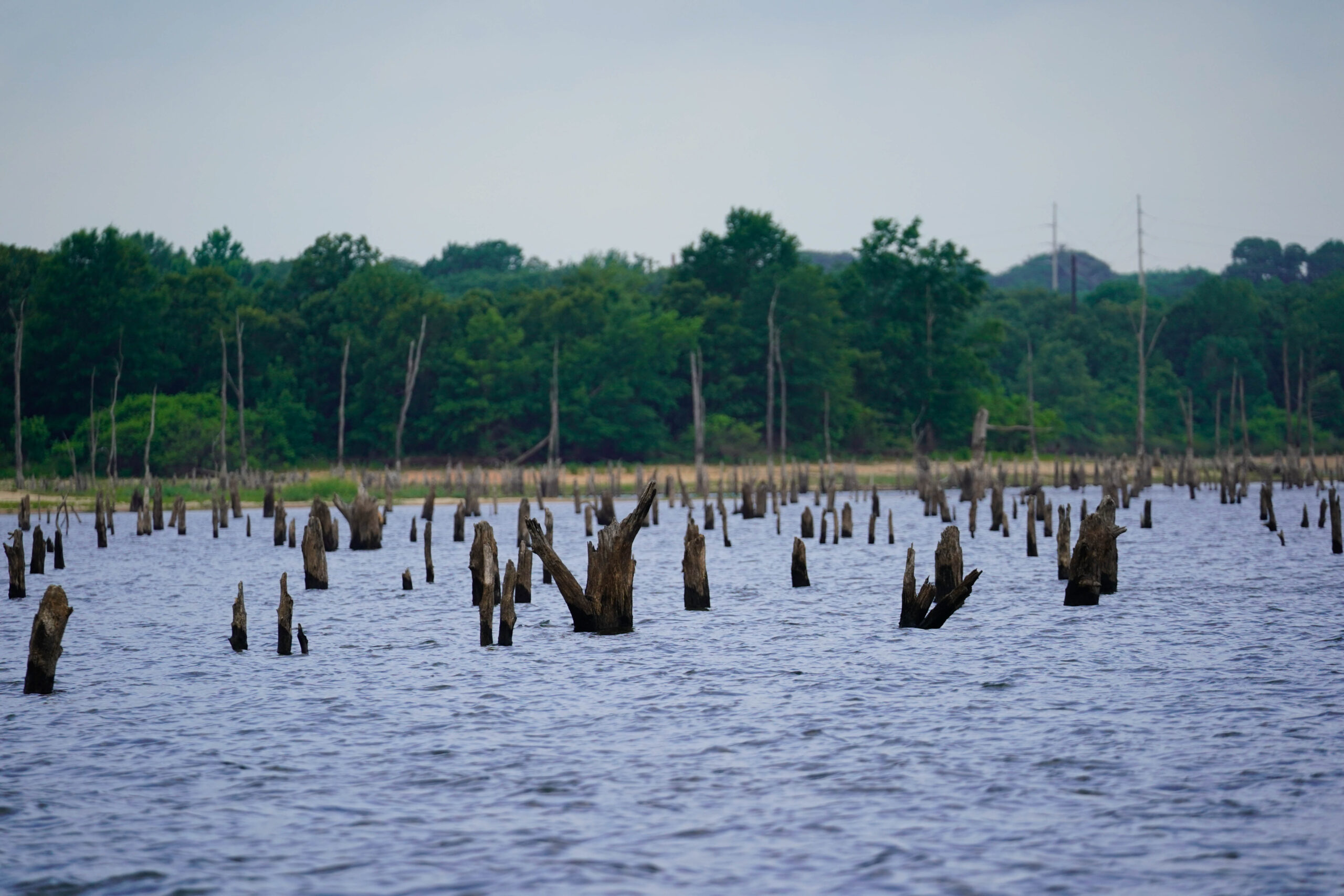YANTIS, Texas — Lake Fork is full of water and full of big bass, which bodes well for the 102 anglers set to compete in the 2025 Tackle Warehouse Bassmaster Elite at this east Texas powerhouse.
Competition days will be May 8-11 with daily takeoffs from Caney Point Recreation Area at 6:30 a.m. CT and weigh-ins each day at the same location at 2:30 p.m.
“The weather has been pretty stable around Texas lately,” said Progressive Bassmaster Elite Series pro Keith Combs. “We haven’t had a lot of rain, but we’ve had enough. The lake is near full now and it stayed up most of last year, so it should be a regular Lake Fork tournament.
“That being said, it is the rainy time of year in Texas, so a lot could change if we start getting rain. That could cause a little water color change in the pockets and creeks, but Fork’s not on a major river that would (significantly) affect it, so this should be a good, stable tournament.”
A thriving testament to the diligent work by the Texas Parks and Wildlife Department, which manages Lake Fork as a trophy bass fishery, this 27,264-acre impoundment of Lake Fork Creek (Sabine River tributary) boasts an impressive population of quality fish, with double-digit giants impressively abundant.
In all five of the previous Elite events at Lake Fork, the renowned fishery yielded Century Club belts, which recognize four-day total weights of 100 pounds or more. Last year’s event yielded 10 century belts, including then-rookie Trey McKinney’s winning total of 130 pounds, 15 ounces.
The tournament format will differ from the standard Elite Series event, as anglers will catch, weigh and release their fish. Anglers catching fish surpassing 24 inches (referred to as “overs”) may bring one to the weigh-in scales. Any fish brought to the weigh-ins are promptly released.
Combs said he expects a mix of spawn and postspawn fish. Bed fishing for Texas tanks might sound appealing, but Combs warns against depending solely on that uncertain pursuit.
“I don’t think a guy can win it exclusively on spawners unless all the weather conditions lined up for every single day,” Combs said. “Someone could earn a Top 10 with all spawners, but I think it would take a postspawn pattern or a combination of spawn and postspawn to win.”
With minimal vegetation, Lake Fork spawners typically use habitat such as docks, stumps and other hard-bottom sites. The typical assortment of Texas-rigged baits fool these bed fish, but Combs suggests upsizing the profiles for this lake’s bigger class of fish.
Postspawn habitat typically includes hard clay points, ridges and big offshore fields of standing timber, the latter of which offers vast habitat for fish to hang out and feed as they wish.
Forward-facing sonar technology has, in recent years, revealed much about specific bass positioning, so anglers can quickly and efficiently break down large areas to locate prime habitat and fish locations. Combs lists jerkbaits, swimbaits, big crankbaits, Neko rigs and jighead minnows as the likely postspawn lineup.
“I think it’s pretty consistent; we’ve been there several times in May,” Combs said. “I think most of what happens on Fork has been (seen); it will just be a matter of a guy dialing it in a little better than the rest of the field.”
As Combs points out, the likelihood of such a performance is higher with the postspawn option simply due to numeric superiority. While bed fishing might reward an angler with a handful of shots at difference-makers, the potential for intercepting postspawn fish offers higher statistical advantage.
Bass follow predictable seasonal routes into and out of their spawning zones, with periodic pauses at key prespawn and postspawn habitat. If an angler locates one of those receiving areas and has the good fortune to fish it for four days, that one spot could deliver the blue trophy.
“I do think in the past you would need multiple spots to win, but now, with a lot of fish moving out, I think a guy could win on one spot,” Combs said. “In general on Fork, schools of fish move in and out a lot. You need to find a place where fish are coming to you.”
“It’s going to take a lot of weight to win; it will take over 100 pounds, there’s no doubt about that,” Combs said. “There’s definitely a way to get bit with smaller fish — you’re just going to have to concentrate on a lesser bite for better quality fish.
“I think the guys that pull away from the rest of the field will not focus on a 4-pound fish. You really don’t need to weigh a single 4-pound fish if you want to win the tournament. You don’t just get a limit and then go for a big bite. You have to look for nothing but big bites.”
As past events have shown, mega-bags are not only possible, they’re expected. Not everyone will be so fortunate, but Combs fully expects a couple of eye-popping performances.
“You can’t do it every day, but you need that one day with a 30- to 40-pound bag,” he said. “We will see that once, maybe twice.”
Bassmaster LIVE coverage of the Tackle Warehouse Bassmaster Elite at Lake Fork will be available on Bassmaster.com on Days 1 and 2 starting at 8 a.m. ET and ending at 3 p.m. and also on Roku from 8 to 11 a.m. FS1 will carry the morning action on Day 3 from 8 a.m. to 11:30 a.m. before moving to Bassmaster.com in the afternoon. Championship Sunday coverage will be broadcast on FS1 from 8 a.m. to 11 a.m. and FOX from noon to 3 p.m.
The Tackle Warehouse Bassmaster Elite at Lake Fork is hosted by Wood County.
